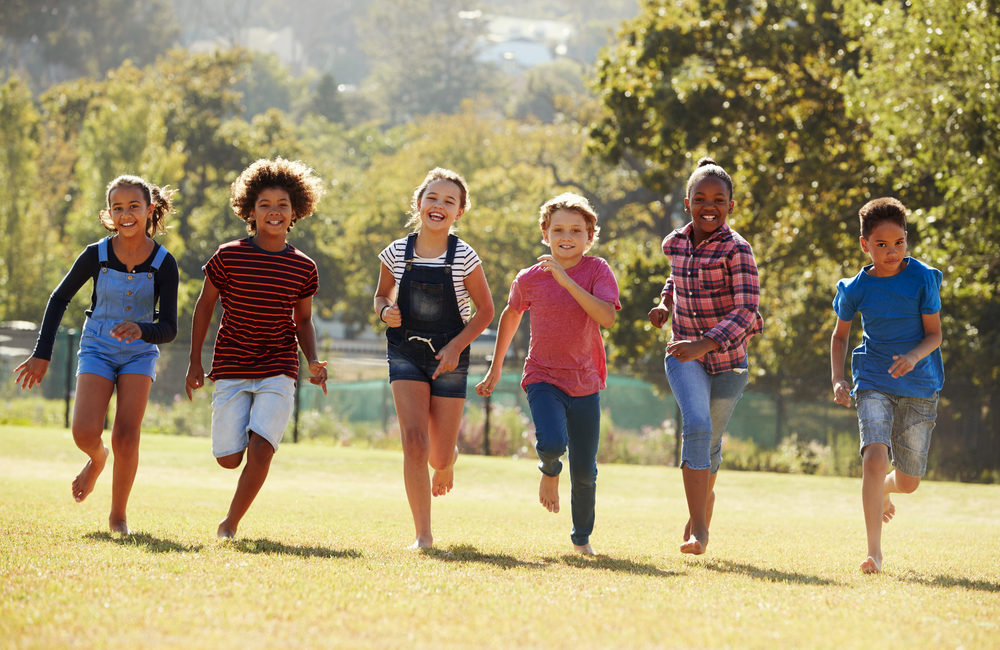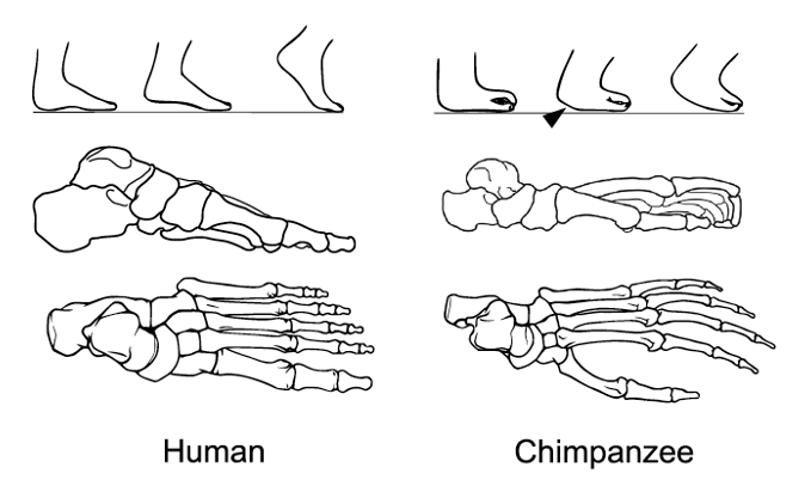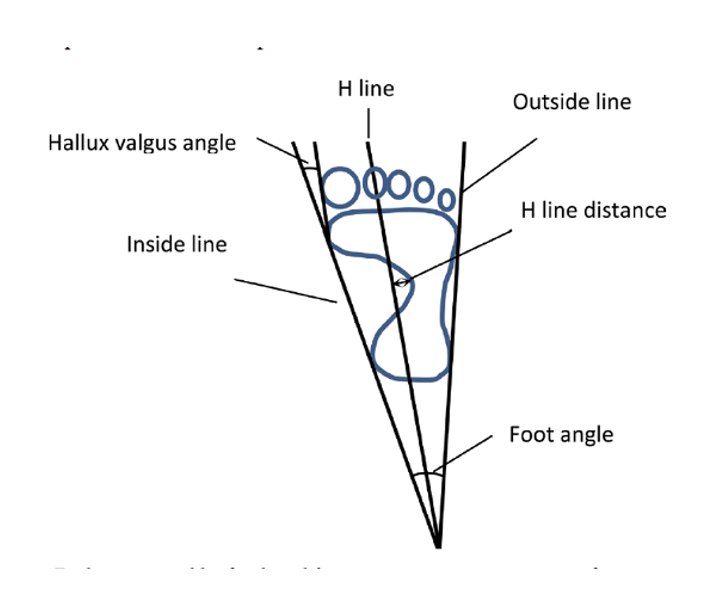Why our kids wear barefoot shoes

The best show I’ve seen on Netflix in the past 5 years is a 4 part docu-series called Chimp Empire (directed by same group as My Octopus Teacher). This incredible program follows the largest chimp colony in the world in the Ngogo region of Uganda and is laid out like a storybook……a really really crazy storybook.
One striking feature a nerd like me can’t help but focus on is how chimps get around. Watching Jackson in a battle scene, or Abrams in his rain dance makes me realize that our feet have come a long way over the 7 million years since we evolved from chimps. Really you can break this down to 4 major changes:
– A big heel bone (calcaneus) to allow for the repeated impact of walking on 2 feet instead of 4.
– A longer midfoot that is stiffened by the arches in our feet and the development of the plantar fascia to help propel us forward.
– Longer great toes and shorter toes 2-5 to allow us to toe off our big toe.
– Higher arches with greater bending at the foot and ankle (plantar flexion) to allow us to push off while walking.

To simplify these features, our feet have become:
– More robust to allow impact
– Developed an arch and a spring to allow us to propel forward
– Become more flexible.
The question begs, if it took us 7 million years to improve our barefoot walking……then why have we decided to change all of this with the advent of the modern shoe really in just the past 50 years?
Since about 2009 there has been a ton of research looking at just that question. The issues are that most of the literature has focussed on just 2 features:
– An adult population
– The impact of barefoot/minimalist footwear as it relates specifically to running.
We started exploring the merits of this research in depth in blogs here and here way back in 2012 on our site (man we are getting old).
Now as parents we started to wonder about the effects of minimalist and barefoot walking in kids. Specifically, the foot is roughly full length in girls at age 13 and males at age 15. We are born with no arch, and it only starts developing when we start walking at age 1, and the arch generally remains fairly stable after just 7 years of age in most people. Clearly this childhood and adolescent window MUST be a critical period for the development of the foot.
What surprised us was just how important it is…..a quick spoiler is that after our deep dive into the research on the impact of minimalist shoes on kids for a presentation we were making, Dave and I bought all 5 of our collective kids barefoot shoes.
A quick and oversimplified summary of the research on adults that walk around barefoot versus those that walk around shod (wearing shoes) finds that folks in shoes have:
– A higher variation in foot characteristics like flat feet and hallux valgus (bunions)
– Reduced pliability (a less flexible foot).
While the adult barefoot population has:
– A wider foot (specifically the forefoot)
– Fewer foot and toe deformities
– A higher arch and stronger foot
– Lower hallux (great toe) angle – meaning less bunions.
The first quality research paper to see if these attributes hold true in a younger population was published in 2017 in the best journal in the world (Nature) which should help convince you that this isn’t just a ‘fringe’ topic.
The Hollander study was beautiful in its simplicity and at the same time admirable in how ridiculously hard it must have been to conduct. Essentially they looked at 2 populations – one group of kids aged 6-18 that have always been barefoot and the other that have always worn shoes and described the differences in their feet.
For the barefoot group they travelled to urban areas around the cape of South Africa. For the shoe group they looked at kids the exact same ages in West Germany where school policy dictates they HAVE to wear shoes.
Here are the summary of findings from this first ground breaking study:
– Barefoot kids had an increased static arch height index (meaning a lower incidence of flat feet).
– They also had a significantly more pliable foot. A lack of pliability is linked to both bunions and flat feet.
– The barefoot kids had wider, but also longer feet for most age groups studied.
The conclusion taken from the article states:
“Therefore, growing up barefoot or shod may play an important role for childhood foot development, implying long term consequences for motor learning and health later in life.”
Well such findings in the most important journal in the world obviously led to huge media exposure and tons of funding for more robust and better research into the effects of spending more time barefoot on kids right?
Right?
Instead we got crickets.
But later that same year, another study was published that went even more remote. They looked at the Kalenjin tribe of Kenya who are known for 2 things:
– Spending all of their time barefoot.
– Being insanely active – they run up to 20km daily to get to and from school entirely barefoot. (I’m going to remember that the next time my kids complain about making the 900 metre walk to and from school).
This study matched kids from this tribe with other kids in Kenya that wear shoes. It added to the Hollander study by measuring the strength of the kids feet as well as some other features.
To summarize these findings, the barefoot kids had:
– Higher arches (both standing and sitting)
– A greater range of motion in the ankle of 6 degrees (this is extremely important….more later).
– Stiffer heel bones (to be expected from not having any shoe cushioning).
– A STRONGER ENTIRE FOOT – specifically in the muscle that is thought to be the most important ‘arch’ muscle. When testing individual toes there was no difference, but when the barefoot group recruited their entire foot as one they were stronger then the group in shoes.
– A lower injury prevalence where 61% of the kids in shoes reported a lower extremity injury in the past 12 months versus just 8% in the barefoot group.
So now we know that kids that haven’t been wearing shoes generally have higher static arch height, more pliable feet, and overall stronger feet as well. But how does this translate into motor skills? Specifically greater dorsiflexion (think bringing your toes up towards your face) has been linked with better performance in certain activities in adults and now we know the barefoot kids had a higher ankle range of motion and increased dorsiflexion.
Well in 2018 the group from the initial Hollander study published data on balance testing, jump distance and sprint testing. They found barefoot kids scored better on balance and standing broad jump distance. The kids in shoes did better in sprint testing though they did note that they could only test the kids in their school environments. The kids in shoes in West Germany were tested indoors in a flat gym while the Kenyan kids were tested outside in uneven ground with wind and weather changes.
From these studies we went way down the rabbit hole. Specifically we wanted to know about even younger ages.
A 2018 study looked at Japanese kids in Kindergarten. You see in Japan, some schools refuse to let kids wear shoes, while others have a policy demanding shoes. This is the type of policy that researchers drool over as it’s considered a perfect, natural environment, study population.
They looked at over 300 kinds all aged 5 and 6 and found even at this age that the barefoot kids had a higher arch already where boys that were barefoot had already attained 89.3% of a ‘normal’ arch height versus just 78.4% for the kids in the shoe group.
The shocking finding to us was that even at the age of just 5 and 6, the hallux valgus angle seen below (essentially how much your big toe is starting to point in) was already higher in the group wearing shoes! That is absolutely insane!

The barefoot policy kindergarteners also had wider feet that caused improved balance. The researchers concluded;
“For preschool children, barefoot policy positively affected the soles’ contact area.”
Ok ok, so now we know not wearing shoes is impactful even on kids as young as 5 and 6 where feet are already taking on unnatural and likely negative attributes by being jammed into modern footwear.
This can’t be happening even younger can it?
Indeed it can.
A 2022 study during COVID looked at toddlers that literally just started walking. It’s a small sample size, but still had stunning findings. Essentially the researchers recruited parents through social media after their kids had just taken their first 5 steps. If they could get to them in the first month after those first 5 steps, they included them in the study. They had 15 kids wear no shoes for 7 months (easy during COVID where you rarely left your house) and had the other 15 kids where shoes for the 7 months.
Now I know what you’re thinking because I thought this too. There’s NO WAY just 7 months (and just the first 7 months) of walking barefoot versus wearing shoes could in any way impact a kids foot.
Well you (and I) were wrong.
In just that short time period, the kids that were assigned to wear shoes already had a lower arch height and increased pronation meaning more of their foot was in contact with the ground. These researchers concluded:
“These findings may encourage parents and caregivers to introduce barefoot shoes or create a habitual barefoot time for their child.”
Now look. We realize that this research is still in its infancy and there is still a ton to uncover. There are no prospective studies on injury prevalence or how these kids feet turn out as adults (either good or bad).
But sometimes you look at the risk profile associated with research and make a call and to us there is an asymmetric positive bet that having our kids spend more time barefoot or in minimalist shoes has a higher likelihood of doing good than bad…..it’s that simple. We protect their feet still with their footwear, but choose shoes that don’t offer much support and mimic being barefoot. At home and in our own yards no shoes at all. We like to keep things simple.
Now go watch Chimp Empire!
